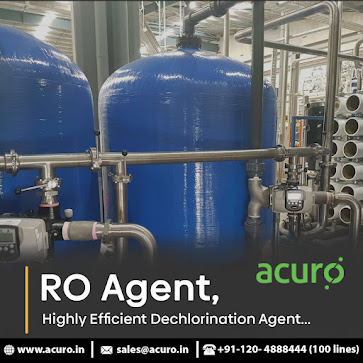DECHLORINATION FOR RO - Acuro Organics Limited

DECHLORINATION FOR RO ( Highly Efficient Dechlorination Agent ) Feed-water to membrane systems often has been treated with chlorine to retard microbiological growth prior to the membrane separation process. This chlorine, however, can irreversibly damage many thin-film composite membranes. Dechlorinator for RO is a blend of high-performance synthetic compounds , used for de-chlorination of RO feed water. Dechlorination For RO KEY FEATURES AND BENEFITS : High purity product - synthetic grade Enhances the output water quality Rapid reaction with chlorine. Protects polyamide membranes from degradation. Safe and simple to use. Concentrated solution . Keywords: RO Dechlorination , RO membrane dechlorinator , RO highly efficient dechlorination , ro agent, dechlorinator, dechlorination agent, Resource: Click Here For more: Forum Submission Asked a Question Question Answer Website Protects RO membrane from potential oxidation which can be caused by free chlorine.